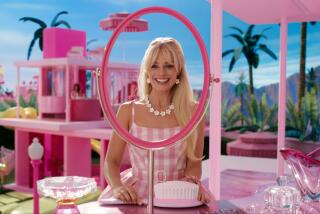The Captain Returns With New Message
- Share via
Thirty years ago on his television show, Captain Kangaroo was teaching children about kindness, relationships, workings of the world.
He is not done with them yet, even though they are now grown-ups.
The Captain, Bob Keeshan, is trying once more to get the attention of his audience of 25 years past. Many of them are parents now, he says, and many need help.
Keeshan, 62 and still going as the Captain on public TV, is the author of “Growing Up Happy” (Doubleday), a book that combines reminiscences, a behind-the-scenes account of “Captain Kangaroo” and child-rearing advice.
The book has some dirt on “Buffalo” Bob Smith. Keeshan recounts being fired from the role of Clarabell the clown on Smith’s “Howdy Doody” TV show three days before Christmas 1952, when Keeshan’s wife was pregnant with the second of their three children. (The Captain, ever kindly, acknowledges his debt to Smith, who gave him his start in broadcasting and taught him much.)
Devotees of “Captain Kangaroo” may appreciate insights into Hugh “Lumpy” Brannum, Mister Green Jeans: Of this born musician, gentle lover of nature, Keeshan discloses: “Everyone, including technicians and stagehands, dreaded meeting Lumpy on summer Monday mornings. . . . Monday was the time for him to grouse about his garden. The birds had eaten his corn, cleaning every cob. . . . Some digging animal had dug and enjoyed his carrots, and someone else had stolen his eggplants. ‘I was going to make ratatouille, damn it!’ ”
Helping Parents
But the purpose of the book, Keeshan says, is to help parents nurture.
“Nurturing books are perhaps more important today than they’ve ever been, because our society with all its changes in the last quarter of the century has placed the family in great jeopardy,” he says.
“Everything involved in nurturing children leads to either a happy future for the nation domestically, or failures,” he says. The country’s greatest problems--drug and alcohol abuse, illiteracy, crime--”all of this comes from failure to nurture.”
Keeshan describes his own childhood as “idyllic.” He grew up in Forest Hills, N.Y., during the Depression, in a family economically secure enough for him not to be aware of it. He did not see serious trouble until his mother’s death, when he was 15. When hardship hit, he says, “I was very, very well prepared.”
‘I Was Valued’
“My mother constantly boosted me. . . . There was no question that I was loved and valued, and there was no question I was expected to accomplish.”
He also had been given the opportunity to develop his imagination. “I loved to play solitary games. . . . I could take my mother’s button box and create sailing ships or airplanes or whatever else in the sand, in the clay of the back yard. And nobody ever said to me . . . ‘put that away,’ as we so often do with children today. We get insecure with their play and uses of imagination. Which is devastating.”
The themes of self-esteem and allowing children to be children are the underpinnings of his message.
“Through the book we address many issues, but the bottom line is self-esteem in children,” Keeshan says.
Family life today is typically stressful, and that too often leads to parents’ victimizing their children, emotionally if not physically.
‘Children Are Loving’
He offers strategies for helping, such as explaining children’s nature: “Children are loving. That is their nature, until it is altered. . . . Children are adoring, of parents in particular. All figures of religious and secular power are nothing in a child’s eyes when compared to a parent. . . .
“Children are irritable and cranky when hungry, sick or emotionally wounded. So feed them well, nurse them to health, stroke them with kindness and understanding. Tomorrow is another day and a new child will emerge, this one all smiles.
“Children cry. They tend to overreact. That’s OK. So do many adults, with greater consequences. . . . Don’t make light of it, even if you are giggling inside. . . . Be sympathetic and find out why the child is crying.
“Children can be angry. When they’re small, it’s usually not too serious, but it is designed to communicate a message. Get your antennae up. As they age, children will learn from adults to ‘use’ anger and other emotions to achieve certain ends. . . . Again, a message is being sent. Listen hard.
“Children grow. Each stage of growth brings new challenges and delights. Relax and enjoy children.”
More to Read
Sign up for our Book Club newsletter
Get the latest news, events and more from the Los Angeles Times Book Club, and help us get L.A. reading and talking.
You may occasionally receive promotional content from the Los Angeles Times.










